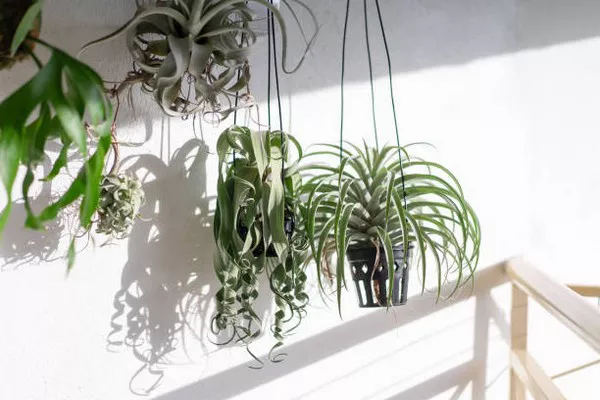In an era where urban living and indoor spaces are becoming increasingly prevalent, the allure of air plants and succulents has soared. These low-maintenance, aesthetically pleasing plants not only add a touch of greenery to any environment but also offer therapeutic benefits and contribute to improved air quality. However, like any living organism, they require care and attention to thrive. In this comprehensive guide, we delve into the intricate art of nurturing air plants and succulents, from understanding their unique needs to implementing effective care routines.
Understanding Air Plants and Succulents
Before diving into care tips, it’s essential to grasp the fundamental characteristics of air plants (Tillandsia) and succulents.
1. Air Plants: Unlike traditional plants, air plants do not require soil to grow. Instead, they absorb nutrients and moisture through their specialized leaves. Originating from tropical regions, they thrive in warm, humid environments and often attach themselves to trees or rocks.
2. Succulents: Succulents encompass a diverse array of plant species characterized by their fleshy, water-retaining leaves or stems. They have adapted to survive in arid climates by storing water in their tissues, making them resilient to drought conditions.
Creating the Ideal Environment
Both air plants and succulents flourish in specific environmental conditions.
1. Light: Place your plants in bright, indirect sunlight. While they require ample light to thrive, direct sunlight can scorch their delicate foliage, especially during the peak of summer.
2. Temperature: Aim for temperatures between 50°F to 90°F (10°C to 32°C). Avoid exposing them to extreme cold or heat, as it can damage their tissues.
3. Humidity: Air plants thrive in humid environments, making bathrooms or kitchens ideal locations. However, regular misting can compensate for lower humidity levels in other areas. Succulents prefer dry air but can tolerate moderate humidity.
Watering Wisely
Proper watering is crucial for the health and longevity of air plants and succulents.
1. Air Plants: Submerge your air plants in room temperature water for 20-30 minutes once a week. Ensure thorough drying afterward to prevent rot. In drier climates, misting between soakings can provide additional hydration.
2. Succulents: Water your succulents deeply but infrequently. Allow the soil to dry out completely between waterings to prevent root rot. Adjust watering frequency based on environmental factors such as temperature and humidity.
Choosing the Right Potting Medium
Selecting the appropriate potting medium is vital for ensuring proper drainage and airflow.
1. Air Plants: As they do not require soil, air plants can be displayed in various creative ways, such as mounted on driftwood or nestled in decorative containers filled with sand or pebbles.
2. Succulents: Opt for a well-draining soil mix specifically formulated for succulents and cacti. Alternatively, you can create your mix by combining potting soil with perlite or coarse sand to enhance drainage.
Feeding and Fertilizing
While air plants derive most of their nutrients from the air, supplemental feeding can promote growth and vitality. Use a water-soluble fertilizer formulated for bromeliads or orchids at quarter strength once a month during the growing season.
Succulents have modest nutritional requirements and can thrive without regular fertilization. However, applying a balanced, diluted fertilizer during the growing season can boost their overall health and vigor.
Pruning and Maintenance
Regular maintenance ensures that your air plants and succulents remain healthy and visually appealing.
1. Air Plants: Trim dead or dried-out leaves using sterile scissors to maintain a tidy appearance. Remove any debris or buildup from the leaves’ surface to facilitate nutrient absorption.
2. Succulents: Prune leggy or overgrown stems to encourage compact growth and prevent crowding. Propagate healthy cuttings to expand your succulent collection or share with fellow enthusiasts.
Combatting Common Pests and Diseases
Despite their resilience, air plants and succulents are susceptible to certain pests and diseases.
1. Pests: Keep an eye out for common invaders such as aphids, mealybugs, and spider mites. Treat infestations promptly using insecticidal soap or neem oil, ensuring thorough coverage of affected areas.
2. Diseases: Overwatering can lead to root rot and fungal infections in both air plants and succulents. Practice proper watering techniques and ensure adequate airflow around the plants to minimize the risk of disease.
Seasonal Considerations
Adjust your care routine seasonally to accommodate changes in environmental conditions.
1. Winter: Decrease watering frequency during the winter months when growth slows, and daylight hours are shorter. Move plants away from drafty windows or heating vents to prevent cold damage.
2. Summer: Increase watering and provide additional shade or protection from intense sunlight during the peak of summer. Monitor plants closely for signs of stress, such as wilting or discoloration.
Conclusion
Caring for air plants and succulents is a rewarding endeavor that offers endless opportunities for creativity and self-expression. By understanding their unique needs and implementing proper care techniques, you can cultivate thriving green companions that enhance any indoor space. Whether you’re a seasoned enthusiast or a novice gardener, embracing the art of nurturing these resilient plants is sure to bring joy and tranquility into your life.


